
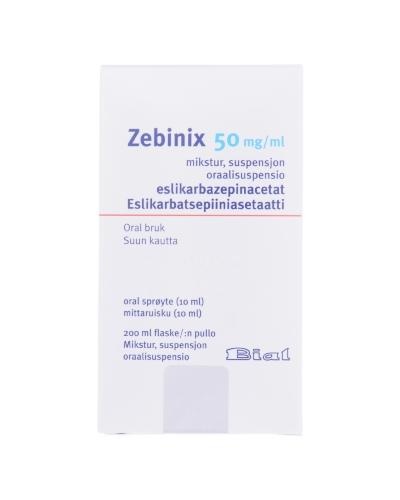
ЗЕБІНІКС 50 мг/мл ОРАЛЬНА СУСПЕНЗІЯ

Запитайте лікаря про рецепт на ЗЕБІНІКС 50 мг/мл ОРАЛЬНА СУСПЕНЗІЯ

Інструкція із застосування ЗЕБІНІКС 50 мг/мл ОРАЛЬНА СУСПЕНЗІЯ
Введення
Опис: інформація для користувача
Зебінкс 50 мг/мл суспензія для перорального прийому
ацетат еслікарбазепіну
Прочитайте уважно весь опис перед початком прийому цього лікарського засобу, оскільки він містить важливу інформацію для вас.
- Збережіть цей опис, оскільки вам може знадобитися знову його прочитати.
- Якщо у вас виникли питання, проконсультуйтеся з вашим лікарем або фармацевтом.
- Цей лікарський засіб призначений тільки для вас, і не слід давати його іншим людям, навіть якщо вони мають такі самі симптоми, як і ви, оскільки це може їм нашкодити.
- Якщо ви відчуваєте побічні ефекти, проконсультуйтеся з вашим лікарем або фармацевтом, навіть якщо це побічні ефекти, які не вказані в цьому описі. Див. розділ 4.
Зміст опису:
- Що таке Зебінкс і для чого він використовується
- Що вам потрібно знати перед початком прийому Зебінксу
- Як приймати Зебінкс
- Можливі побічні ефекти
- Зберігання Зебінксу
- Зміст упаковки та додаткова інформація
1. Що таке Зебінкс і для чого він використовується
Зебінкс містить активну речовину ацетат еслікарбазепіну.
Зебінкс належить до групи лікарських засобів, званих антиепілептиками, які використовуються для лікування епілепсії, захворювання, при якому людина, яка його має, переживає судоми або повторювані судоми.
Зебінкс використовується:
- як єдиний лікарський засіб (монотерапія) у дорослих пацієнтів з епілепсією, яка була вперше діагностована;
- разом з іншими антиепілептичними лікарськими засобами (ад'ювантна терапія) у дорослих пацієнтів, підлітків і дітей старше 6 років, які страждають на епілептичні напади (судоми), які впливають на частину мозку (парціальні судоми). Ці судоми можуть бути kèmождені або не kèmождені судомою, яка впливає на весь мозок (генералізована судома).
Ваш лікар призначив Зебінкс для зменшення кількості судом.
2. Що вам потрібно знати перед початком прийому Зебінксу
Не приймайте Зебінкс:
- якщо ви алергічні на ацетат еслікарбазепіну, інші похідні карбоксаміди (наприклад, карбамазепін або окскарбазепін, лікарські засоби, які використовуються для лікування епілепсії), або на будь-які інші компоненти цього лікарського засобу (перелічені в розділі 6);
- якщо ви страждаєте на певний тип порушення ритму серця (блокада атриовентрикулярного зв'язку другого або третього ступеня).
Попередження та застереження
Проконсультуйтеся з вашим лікарем або фармацевтом перед початком прийому Зебінксу
Негайно повідомте вашому лікареві:
- якщо ви відчуваєте пухирці або лущення шкіри та/або слизових оболонок, висип, проблеми з ковтанням або диханням, набряк губ, обличчя, повік, горла або язика. Це можуть бути ознаки алергічної реакції;
- якщо ви страждаєте на сплутаність, погіршення судом або зниження свідомості, які можуть бути ознаками низького рівня солі в крові.
Повідомте вашому лікареві:
- якщо ви маєте проблеми з нирками. Можливо, ваш лікар буде потрібно коригувати дозу. Зебінкс не рекомендується пацієнтам з тяжкими порушеннями ниркової функції;
- якщо ви маєте проблеми з печінкою. Зебінкс не рекомендується пацієнтам з тяжкими порушеннями печінкової функції;
- якщо ви приймаєте будь-які лікарські засоби, які можуть викликати порушення на ЕКГ (електрокардіограмі) під назвою збільшення інтервалу PR. Якщо ви не впевнені, чи можуть лікарські засоби, які ви приймаєте, викликати цей ефект, обговоріть це з вашим лікарем;
- якщо ви страждаєте на будь-які захворювання серця, такі як серцева недостатність або інфаркт міокарда, або маєте будь-які порушення ритму серця;
- якщо ви страждаєте на судоми, які починаються з розширеної електричної розрядки, яка впливає на обидві сторони мозку.
Дрібна кількість людей, які приймають антиепілептичні лікарські засоби, мали думки про самопошкодження або суїцидальні думки. Якщо це відбувається з вами під час прийому Зебінксу, негайно повідомте вашому лікареві.
Зебінкс може викликати в вас запаморочення та/або головокружіння, особливо на початку лікування. Будьте особливо обережні під час прийому Зебінксу, щоб уникнути випадкових травм, таких як падіння.
Будьте особливо обережні з Зебінксом
У післямаркетинговому досвіді пацієнтів, які приймали Зебінкс, були повідомлені тяжкі шкірні реакції та потенційно смертельні реакції, включаючи синдром Стівенса-Джонсона/некролітичний епідермальний лізис, реакцію на лікарський засіб з еозінофілією та системними симптомами (DRESS).
Якщо ви розвиваєте тяжку висипку або інші шкірні симптоми (див. розділ 4), припиніть приймати Зебінкс і негайно проконсультуйтеся з вашим лікарем або шукайте медичну допомогу.
У пацієнтів тайського походження та китайської етнічної групи Хан ризик тяжких шкірних реакцій, пов'язаних з карбамазепіном або хімічно пов'язаними сполуками, можна передбачити за допомогою аналізу крові цих пацієнтів. Ваш лікар може порадити вам щодо необхідності такого аналізу крові перед початком прийому Зебінксу.
Діти
Зебінкс не повинен прийматися дітям віком 6 років або молодше.
Прийом Зебінксу з іншими лікарськими засобами
Повідомте вашому лікареві або фармацевту, якщо ви приймаєте, нещодавно приймали або можете приймати будь-які інші лікарські засоби. Це стосується випадків, коли будь-який з цих лікарських засобів може вплинути на дію Зебінксу, або Зебінкс може вплинути на дію цих лікарських засобів. Повідомте вашому лікареві, якщо ви приймаєте:
- фенітойн (лікарський засіб, який використовується для лікування епілепсії), оскільки можливо, що буде потрібно коригувати дозу;
- карбамазепін (лікарський засіб, який використовується для лікування епілепсії), оскільки можливо, що буде потрібно коригувати дозу, і наступні побічні ефекти Зебінксу можуть виникнути частіше: подвійне бачення, порушення координації та головокружіння;
- гормональні контрацептиви (наприклад, контрацептивні таблетки) оскільки Зебінкс може зменшити їхню ефективність;
- сімвастатин (лікарський засіб, який використовується для зниження рівня холестерину), оскільки можливо, що буде потрібно коригувати дозу;
- розувастатин, лікарський засіб, який використовується для зниження рівня холестерину;
- антikoагулянт варфарин;
- антідепресанти-інгібітори моноамінооксидази (ІМАО);
- не приймайте окскарбазепін (лікарський засіб, який використовується для лікування епілепсії) разом з Зебінксом, оскільки невідомо, чи це безпечно приймати ці два лікарські засоби разом.
Див. розділ "Вагітність і лактація" для отримання рекомендацій щодо контрацепції.
Вагітність і лактація
Не рекомендується використання Зебінксу, якщо ви вагітні, оскільки невідомо, яким чином Зебінкс впливає на вагітність та плід.
Якщо ви плануєте завагітніти, обговоріть це з вашим лікарем перед припиненням контрацепції та перед завагітнінням. Ваш лікар може вирішити змінити ваше лікування.
Є обмежені дані про використання ацетату еслікарбазепіну у вагітних жінок.
Дослідження показали збільшення ризику вроджених дефектів та проблем з нейрологічним розвитком (розвитком мозку) у дітей жінок, які приймають антиепілептичні лікарські засоби, особливо коли приймають кілька антиепілептичних лікарських засобів одночасно.
Якщо ви вагітні або думаєте, що можете бути вагітні, негайно повідомте вашому лікареві. Не припиняйте приймати ваш лікарський засіб без обговорення цього з вашим лікарем. Припинення прийому вашого лікарського засобу без обговорення цього з вашим лікарем може викликати судоми, які можуть бути небезпечними для вас та вашого плода. Ваш лікар може вирішити змінити ваше лікування.
Якщо ви жінка репродуктивного віку та не плануєте завагітніти, ви повинні використовувати ефективний метод контрацепції під час лікування Зебінксом. Зебінкс може вплинути на дію гормональних контрацептивів, таких як контрацептивні таблетки, та зробити їх менш ефективними для запобігання вагітності. Тому рекомендується використовувати інші методи контрацепції, які є безпечними та ефективними під час прийому Зебінксу. Обговоріть це з вашим лікарем, який порадить вам щодо найбільш підходящого методу контрацепції для використання під час прийому Зебінксу. Якщо ви припините лікування Зебінксом, ви повинні продовжувати використовувати ефективний метод контрацепції до кінця поточного менструального циклу. Якщо ви приймаєте Зебінкс під час вагітності, ваш дитина також може мати ризик кровотечі безпосередньо після народження. Можливо, ваш лікар призначить вам та вашій дитині лікарський засіб для запобігання цьому.
Не годуйте грудьми під час прийому Зебінксу. Невідомо, чи він виділяється в грудне молоко.
Відповідальність за керування транспортними засобами та використання машин
Зебінкс може викликати в вас запаморочення, головокружіння та вплинути на ваш зір, особливо на початку лікування. Якщо це відбувається з вами, не керуйте транспортними засобами та не використовуйте жодних машин чи інструментів.
Зебінкс містить пара-гідроксібензоат метилу (Е218) та сульфіти
Зебінкс суспензія для перорального прийому містить пара-гідроксібензоат метилу (Е218), який може викликати алергічні реакції (можливо, із затримкою), та сульфіти, які рідко можуть викликати алергічні реакції та бронхоспазм (нагальна відчуття задухи).
3. Як приймати Зебінкс
Слідуйте точно інструкціям щодо прийому цього лікарського засобу, вказаним вашим лікарем. У разі сумнівів проконсультуйтеся з вашим лікарем або фармацевтом.
Дорослі
Доза на початку лікування
400 мг один раз на добу протягом однієї або двох тижнів, перш ніж збільшити до дози підтримання. Ваш лікар вирішить, чи буде вам призначена ця доза протягом однієї або двох тижнів.
Доза підтримання
Звичайна доза підтримання становить 800 мг один раз на добу.
У залежності від того, як ви реагуєте на Зебінкс, дозу можна збільшити до 1200 мг один раз на добу. Якщо ви приймаєте Зебінкс тільки (монотерапія), ваш лікар може вирішити збільшити дозу до 1600 мг один раз на добу.
Пацієнти з порушеннями ниркової функції
Якщо у вас є порушення ниркової функції, зазвичай вам буде призначена менша доза Зебінксу. Ваш лікар визначить правильну дозу для вас. Зебінкс не рекомендується пацієнтам з тяжкими порушеннями ниркової функції.
Пацієнти похилого віку (старше 65 років)
Якщо ви старше 65 років і приймаєте Зебінкс у монотерапії, доза 1600 мг не підходить для вас.
Діти старше 6 років
Доза на початку лікування
Доза початку лікування становить 10 мг на кілограм ваги тіла один раз на добу протягом однієї або двох тижнів, перш ніж збільшити до дози підтримання.
Доза підтримання
У залежності від того, як ви реагуєте на Зебінкс, дозу можна збільшити на 10 мг на кілограм ваги тіла з інтервалом у одну або дві тижні до 30 мг на кілограм ваги тіла. Максимальна доза становить 1200 мг один раз на добу.
Діти ≥ 60 кг
Діти з вагою тіла 60 кг або більше повинні приймати таку саму дозу, як і дорослі.
Суспензія для перорального прийому, інша лікарська форма, може бути більш підходящою для прийому дітям. Проконсультуйтеся з вашим лікарем або фармацевтом.
Форма та спосіб прийому
Зебінкс приймається перорально.
Зебінкс суспензія для перорального прийому може прийматися з або без їжі.
Витрясайте добре перед використанням.
Всегда використовуйте оральну джерелу, яка надходить у комплекті з лікарським засобом.
Інструкції з використання:
Пункт 1. Вийміть з картонної коробки пляшку, оральну джерелу та адаптер пляшки.
Пункт 2. Витрясайте пляшку не менше 10 секунд та вийміть кришку безпеки, натиснувши її вниз та повернувши проти годинникової стрілки (вліво).
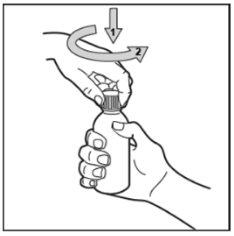
Пункт 3. Вставте адаптер у відкриту пляшку. Можливо, вам потрібно буде застосувати певну силу, щоб вставити його надійно. Як тільки адаптер буде вставлений, його не слід виймати з пляшки. Пляшку можна закрити кришкою, навіть якщо адаптер залишається на місці.
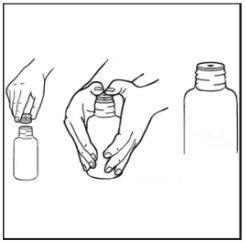
Пункт 4. Для полегшення процесу необхідно відмітирувати бажаний об'єм на джерелі, рухаючи поршень. Вставте наконечник оральної джерелі в адаптер пляшки, тримаючи її догори дном. Натисніть поршень повністю вниз. Це створить тиск усередині пляшки, який допоможе дозувати суспензію та змусить її вийти з пляшки в джерелу.
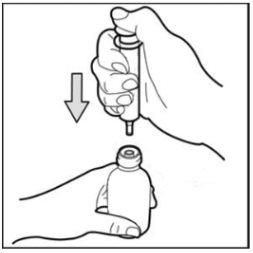
Пункт 5: Тримайте джерелу на місці та поверніть пляшку догори дном.
Аккуратно потягніть поршень джерелі вниз до бажаного об'єму.
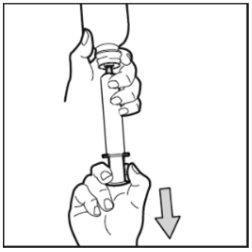
Пункт 6: Якщо ви бачите будь-які повітряні бульбашки в джерелі, натисніть поршень вгору достатньо, щоб виштовхнути великі повітряні бульбашки. Аккуратно потягніть поршень вниз до дози, призначеної вашим лікарем.
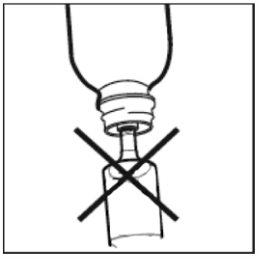
Пункт 7. Поверніть пляшку догори та вийміть джерелу з пляшки. Будьте обережні, не натискайте поршень вниз, коли виймаєте джерелу з пляшки.
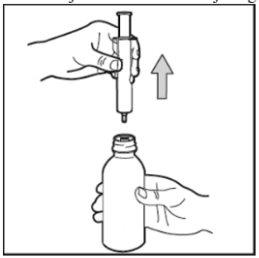
Пункт 8. Закрутите кришку пляшки за годинниковою стрілкою (праворуч).
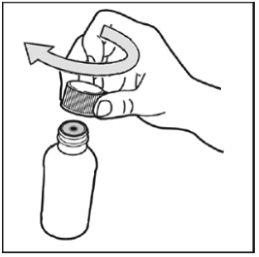
Пункт 9. Помістіть джерелу в рот проти внутрішньої частини щоки. Натисніть поршень повільно, щоб випустити Зебінкс у ваш рот.
Пункт 10: Промийте джерелу після кожного використання у склянці з чистою водою. Повторіть цей процес очищення три рази.
Збережіть у картонній коробці пляшку та оральну джерелу разом до наступного використання.
Якщо ви прийняли більше Зебінксу, ніж потрібно
Якщо ви випадково прийняли більше Зебінксу, ніж потрібно, ви перебуваєте під потенційним ризиком більшої кількості судом; або ви можете відчувати, що ваше серце б'ється нерівномірно або швидше. Зв'яжіться з вашим лікарем або негайно зверніться до лікарні, якщо ви відчуваєте будь-які з цих симптомів. Візьміть з собою упаковку лікарського засобу, щоб лікар знав, що ви прийняли.
Якщо ви забули прийняти Зебінкс
Якщо ви забули прийняти одну дозу, прийміть її, як тільки ви це пам'ятаєте, та продовжуйте приймати лікарський засіб звичайним чином. Не приймайте подвійну дозу, щоб компенсувати пропущені дози.
Якщо ви припините лікування Зебінксом
Не припиняйте раптово приймати суспензію для перорального прийому. Якщо ви це зробите, ви перебуваєте під ризиком більшої кількості судом. Ваш лікар вирішить, скільки часу вам потрібно приймати Зебінкс. Якщо ваш лікар вирішить припинити ваше лікування Зебінксом, зазвичай він зменшить дозу поступово. Важливо завершити лікування згідно з інструкціями вашого лікаря; інакше ваші симптоми можуть погіршитися.
Якщо у вас є будь-які інші питання щодо використання цього лікарського засобу, проконсультуйтеся з вашим лікарем або фармацевтом.
4. Можливі побічні ефекти
Як і всі лікарські засоби, цей лікарський засіб може викликати побічні ефекти, хоча не всі люди їх переживають.
Наступні побічні ефекти можуть бути дуже серйозними. Якщо вони з'являються, припиніть введення Зебініксу та повідомте про це лікаря або негайно зверніться до лікарні, оскільки можливо буде потрібне термінове медичне лікування:
- пухирі або лущення шкіри та/або слизових оболонок, висип, проблеми з ковтанням або диханням, набряк губ, обличчя, повік, горла або язика. Це можуть бути ознаки алергічної реакції.
Побічні ефекти дуже часто(можуть впливати на понад 1 з 10 осіб) є:
- головокружіння або сонливість.
Побічні ефекти часто(можуть впливати до 1 з 10 осіб) є:
- чуття нестабільності, або того, що ви обертаєтесь або плаваєте;
- нудота або блювота;
- головний біль;
- діарея;
- подвійне бачення або розмитість;
- важкість з концентрацією;
- чуття втоми або зменшення енергії;
- тремор;
- висип;
- аналіз крові, який показує низькі рівні натрію;
- зменшення апетиту;
- важкість з сном;
- важкість у координації рухів (атаксія);
- збільшення ваги.
Побічні ефекти рідко(можуть впливати до 1 з 100 осіб) є:
- незграбність рухів;
- алергія;
- запор;
- конвульсії;
- гіпоактивна щитоподібна залоза. Симптоми включають зниження рівня тиреоїдних гормонів (виявляється в аналізі крові), непереносимість холоду, збільшення розміру язика, нігтів або волосся тонких і ламких, і низьку температуру тіла;
- проблеми з печінкою (наприклад, збільшення печінкових ферментів);
- високий кров'яний тиск або інтенсивне збільшення кров'яного тиску;
- низький кров'яний тиск, або зниження кров'яного тиску при встоянні;
- аналіз крові, який показує низькі рівні солей (включаючи хлорид), або зменшення кількості червоних кров'яних тілець;
- зневоднення;
- зміни в рухах очей, розмитість зору або червоні очі;
- спадання;
- термічні опіки;
- погана пам'ять або забування;
- плакання, відчуття депресії, нервозності або плутанини, відсутність інтересу або емоцій;
- неможливість говорити, писати або розуміти мову;
- агітація;
- дефіцит уваги/гіперактивність;
- ірритабельність;
- зміни настрою або галюцинації;
- важкість з говорінням;
- носові кровотечі;
- біль у грудях;
- поколювання або відчуття оніміння в будь-якій частині тіла;
- мігрень;
- паління;
- відчуття аномалії при дотику;
- зміни нюху;
- гудіння в вухах;
- важкість з чуттям;
- набряк ніг і рук;
- кислотність, нездужання шлунка, біль у животі, набряк і нездужання шлунка або сухість у роті;
- чорний кал;
- запалення ясен або біль у зубах;
- потіння або сухість шкіри;
- сверб;
- зміни шкіри (наприклад, червоність шкіри);
- втрати волосся;
- інфекції сечовивідних шляхів;
- загальне нездужання, слабкість або озноб;
- втрати ваги;
- біль у м'язах, біль у кінцівках, слабкість м'язів;
- розлад обміну речовин кісток;
- збільшення рівня кісткових білків;
- червоність (почервоніння), холод у кінцівках;
- сповільнення серцебиття або нерегулярне серцебиття;
- надмірна сонливість;
- седація;
- нейрологічний розлад рухів, при якому м'язи скорочуються, викликаючи скручення і повторювані рухи або аномальні постави. Серед симптомів включають тремор, біль і спазми;
- токсичність лікарських засобів;
- тривога.
Побічні ефекти незнайомої частоти(не можуть бути оцінені на основі наявних даних) є:
- Зниження кількості тромбоцитів, яке збільшує ризик кровотечі або гематом;
- Інтенсивний біль у спині або животі (викликаний запаленням підшлункової залози);
- Зниження кількості лейкоцитів, яке збільшує ймовірність інфекцій;
- Червоні плями або кругові плями часто з пухирями в центрі на тулубі, лущення шкіри, виразки в роті, горлі, носі, геніталіях і очах, червоні та запалені очі, які можуть бути попереджені лихоманкою та/або симптомами, подібними до грипу (синдром Стівенса-Джонсона/токсична епідермальна некроліз);
- Спочатку симптоми, подібні до грипу, висип на обличчі, загальний висип, підвищена температура тіла, підвищення рівня печінкових ферментів, аномалії крові (еозінофілія), збільшення лімфатичних вузлів та інші захворювання тіла (реакція на лікарський засіб з еозінофілією та системними симптомами, також відомою як DRESS або синдром гіперчутливості до лікарських засобів);
- Тяжка алергічна реакція, яка викликає набряк обличчя, горла, рук, ніг, щиколоток або нижньої частини ніг;
- Кропив'янка (висип на шкірі з свербінням);
- Летаргія, плутанина, м'язові спазми або значне погіршення конвульсій (можливі симптоми низького рівня натрію в крові через недостатню секрецію антидіуретичного гормону (АДГ)).
Використання Зебініксу пов'язане з аномалією на ЕКГ (електрокардіограмі), яка називається збільшенням інтервалу PR. Можуть виникнути побічні ефекти, пов'язані з цією аномалією ЕКГ (наприклад, знемога та сповільнення серцебиття).
Було повідомлено про захворювання кісток, включаючи остеопенію та остеопороз (зрідження кісток) та переломи з лікарськими засобами, пов'язаними з карбамазепіном та окскарбазепіном. Порадьтеся з лікарем або фармацевтом, якщо ви перебуваєте на тривалому лікуванні антиепілептиками, маєте історію остеопорозу або приймаєте стероїди.
Повідомлення про побічні ефекти
Якщо ви переживаєте будь-який побічний ефект, проконсультуйтеся з лікарем або фармацевтом, навіть якщо це можливі побічні ефекти, які не вказані в цьому листку. Ви також можете повідомити про них безпосередньо через національну систему повідомлення, включену до Додатку V. Повідомляючи про побічні ефекти, ви можете допомогти надати більше інформації про безпеку цього лікарського засобу.
5. Зберігання Зебініксу
Тримайте цей лікарський засіб поза зоною видимості та досягнення дітей.
Не використовуйте цей лікарський засіб після закінчення терміну придатності, вказаного на пляшці та коробці після літер CAD. Термін придатності - останній день місяця, який вказано.
Після відкриття пляшки не використовуйте її протягом понад 2 місяців.
Не потрібно спеціальних умов зберігання.
Лікарські засоби не повинні викидатися у водопровід або сміття. Спитайте у фармацевта, як позбутися упаковок та лікарських засобів, які вам більше не потрібні. Таким чином, ви допоможете захистити навколишнє середовище.
6. Зміст упаковки та додаткова інформація
Склад Зебініксу
- Активний інгредієнт - ацетат еслікарбазепіну. Кожен мл суспензії для перорального прийому містить 50 мг ацетату еслікарбазепіну.
- Інші компоненти - камедь ксантанової (Е415), стеарат макроголу 100, пара-гідроксибензоат метилу (Е218), содій сакхарину (Е954), штучний ароматизатор Tutti-Frutti (містить мальодекстрин, пропіленгліколь, природний і штучний ароматизатор, і камедь аравійську (Е414), маскування смаку (містить пропіленгліколь, воду та природний і штучний ароматизатор) та очищена вода.
Вигляд продукту та зміст упаковки
Зебінікс 50 мг/мл - це біла або білувата суспензія.
Суспензія для перорального прийому упакована у пляшки з коричневого скла з захисним кришкою з високомолекулярного поліетилену, які містять 200 мл суспензії для перорального прийому, упаковані у картонні коробки. Кожна картонна коробка містить градуйовану піпетку з поліпропілену об'ємом 10 мл з градуюваннями 0,2 мл та адаптер з кополімеру для пляшки.
Власник дозволу на продаж та відповідальна особа за виробництво
BIAL - Portela & Cª, S.A.,
À Av. da Siderurgia Nacional,
4745-457 S. Mamede do Coronado
Португалія
телефон: +351 22 986 61 00
факс: +351 22 986 61 99
електронна пошта: [email protected]
Ви можете запитати додаткову інформацію про цей лікарський засіб, звернувшись до місцевого представника власника дозволу на продаж:
Бельгія/Белгique/Бельгієн BIAL-Portela & Cª., S.A. Телефон/Тел: + 351 22 986 61 0 (Португалія) | Люксембург/Люксембург BIAL-Portela & Cª., S.A. Телефон/Тел: + 351 22 986 61 00 (Португалія) |
Нідерланди BIAL-Portela & Cª, S.A. Телефон: + 351 22 986 61 00 (Португалія) | Польща BIAL-Portela & Cª, S.A. Телефон: + 351 22 986 61 00 (Португалія) |
Угорщина BIAL-Portela & Cª, S.A. Телефон: + 351 22 986 61 00 (Португалія) | Румунія BIAL-Portela & Cª, S.A. Телефон: + 351 22 986 61 00 (Португалія) |
Хорватія BIAL-Portela & Cª, S.A. Телефон: + 351 22 986 61 00 (Португалія) | Словенія BIAL-Portela & Cª, S.A. Телефон: + 351 22 986 61 00 (Португалія) |
Ірландія BIAL-Portela & Cª., S.A. Телефон: + 351 22 986 61 00 (Португалія) | Словаччина BIAL-Portela & Cª., S.A. Телефон: + 351 22 986 61 00 (Португалія) |
Ісландія Nordicinfu Care AB Телефон: +46 (0) 8 601 24 40 | Фінляндія Nordicinfu Care AB Телефон: +358 (0) 207 348 760 |
Італія BIAL-Portela & Cª., S.A. Телефон: + 351 22 986 61 00 (Португалія) | Швеція Nordicinfu Care AB Телефон: +46 (0) 8 601 24 40 |
Кіпр BIAL-Portela & Cª, S.A. Телефон: + 351 22 986 61 00 (Португалія) | Велика Британія BIAL-Portela & Cª., S.A. Телефон: + 351 22 986 61 00 (Португалія) |
Латвія BIAL-Portela & Cª, S.A. Телефон: + 351 22 986 61 00 (Португалія) | |
Литва BIAL-Portela & Cª, S.A. Телефон: + 351 22 986 61 00 (Португалія) |
Дата останнього перегляду цього листка: <{MM РРРР}>
Детальна інформація про цей лікарський засіб доступна на сайті Європейського агентства з лікарських засобів http://www.ema.europa.eu.

Скільки коштує ЗЕБІНІКС 50 мг/мл ОРАЛЬНА СУСПЕНЗІЯ в Іспанії у 2025 році?
ЗЕБІНІКС 50 мг/мл ОРАЛЬНА СУСПЕНЗІЯ коштує в середньому 38.36 євро у листопад, 2025 році. Ціна може змінюватися залежно від регіону, аптеки та наявності рецепта. Рекомендуємо перевіряти актуальну вартість у місцевих аптеках або через онлайн-сервіси.
- Країна реєстрації
- Середня ціна в аптеках38.36 EUR
- Діючі речовини
- Потрібен рецептТак
- Виробник
- Інформація є довідковою і не є медичною порадою. Перед прийомом будь-яких препаратів обов'язково проконсультуйтеся з лікарем. Oladoctor не несе відповідальності за медичні рішення, прийняті на основі цього контенту.
- Альтернативи до ЗЕБІНІКС 50 мг/мл ОРАЛЬНА СУСПЕНЗІЯФорма випуску: ТАБЛЕТКА, 200 мгДіючі речовини: eslicarbazepineВиробник: Accord Healthcare S.L.U.Потрібен рецептФорма випуску: ТАБЛЕТКА, 800 мгДіючі речовини: eslicarbazepineВиробник: Accord Healthcare S.L.U.Потрібен рецептФорма випуску: ТАБЛЕТКА, 600 мгДіючі речовини: eslicarbazepineВиробник: Laboratorios Alter S.A.Потрібен рецепт
Аналоги ЗЕБІНІКС 50 мг/мл ОРАЛЬНА СУСПЕНЗІЯ в інших країнах
Найкращі аналоги з тією самою діючою речовиною та терапевтичним ефектом.
Аналог ЗЕБІНІКС 50 мг/мл ОРАЛЬНА СУСПЕНЗІЯ у Польща
Аналог ЗЕБІНІКС 50 мг/мл ОРАЛЬНА СУСПЕНЗІЯ у Україна
Лікарі онлайн щодо ЗЕБІНІКС 50 мг/мл ОРАЛЬНА СУСПЕНЗІЯ
Консультація щодо дозування, побічних ефектів, взаємодій, протипоказань та поновлення рецепта на ЗЕБІНІКС 50 мг/мл ОРАЛЬНА СУСПЕНЗІЯ – за рішенням лікаря та згідно з місцевими правилами.







